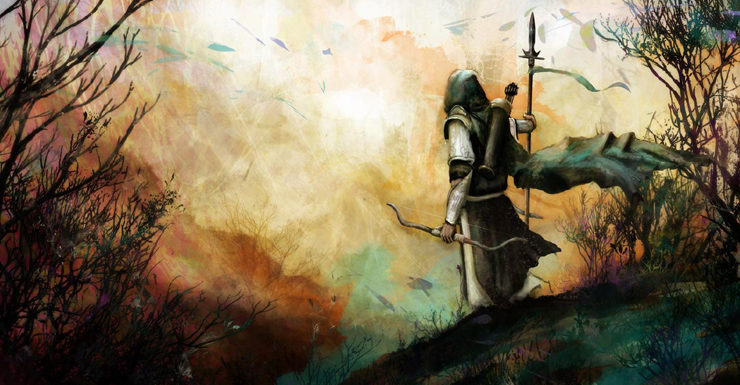In this scattershot series, we’ll be delving “too greedily and too deep,” prying gems out of the glorious rough that is the extended legendarium of Tolkien’s world. This includes drawing on The Lord of the Rings itself, The Hobbit, The Silmarillion, The Children of Húrin, and the History of Middle-earth (or HoME) books.
What is the deal with Elves in The Lord of the Rings? Are they supposed to be as severe as those we see in Peter Jackson’s film trilogies? Questions inevitably arise around these mysterious people, who’ve inspired pretty much all fair-faced, pointy-eared*, woodsy folk in the fantasy genre. J.R.R. Tolkien may not have invented the Elves as a concept—Germanic folklore did—but he sure did popularize them.
But even in his own legendarium, what does it mean, in practice, to be immortal? What’s with all the talk about fading, and the leaving? Why can’t they stick around? Are there any female Elf-warriors, and how many kids can an Elf-mom have, anyway? Are there any Elf-kids? Well, Professor Tolkien didn’t answer all of our world-building questions in his seminal work, but you’d be surprised to see how many of these points he did address. In this discussion, spread out over two parts, I’ll talk about the Elven condition as Tolkien sorted it out, and how those details might apply to the stories we do know.
Readers of The Silmarillionknow that the Elves of Middle-earth we read about in The Lord of the Rings—the Quendi, the Eldar—are a diminished and world-weary people. By the time Frodo takes Gandalf’s advice and leaves Bag End in year 3018 of the Third Age, most of their friends and kin are long gone—to Aman, aka the Undying Lands, which is a whole other continent far beyond the Sea. It’s still part of the world of Arda, yet it’s physically inaccessible to everyone but the Elves, as overseen by the Valar (the godlike custodians of the world). The narrator in LotR tells us that they, the Eldar, “were leaving Middle-earth and were no longer concerned with its troubles.” Which means that those Elves we do meet in The Lord of the Rings are actually the holdouts who’ve decided, for one reason or another, to tarry a little while longer on mortal shores.
In the Peter Jackson films—which I absolutely adore, for all their quirks and flaws—Elves are certainly cool—but maybe a little too cool (and by this I mean “cool” as in lacking in ardor or friendliness). They’re missing the merriment that Tolkien gives them in his books, not to mention their fondness for musical verse. In the films, they’re standoffish, even stiff, like forest Vulcans who model for a living and turn their noses up at the mortal races.
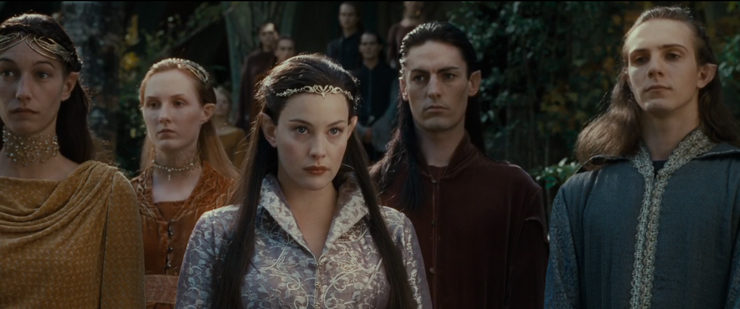
And why do they generally look so bored? Or is that unimpressed?
In the movies, Elrond comes across as more dire than comforting; the unnamed Elf-extras are a bit dead-eyed or lackluster. They don’t look like they care about what’s going on. And if there’s one thing Elves do in the books, as I’ll get to, it’s care. Then there’s Galadriel, who I also adore in both book and film, and she is fittingly eloquent in both. But… While Lothlórien is meant to be a place of rest and recovery for the fracturing Fellowship, Cate Blanchett’s Galadriel seems to alternate between comforting and creeping out Frodo. A fair enough choice for the needs of a film, I suppose. I do judge books and movies differently, as I think we all should.
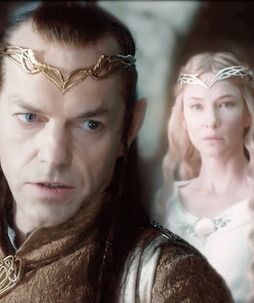
Yet in the text, Elves are quite a bit warmer. Certainly they are more expressive. Yes, they can be imperious (especially Silmarillion-era Elves), but they can laugh and joke easily as well; they are as often jaunty as sorrowful and grim. Watching as the centuries and millennia pass, bound to the planet in a vital way, they almost have to be. Elves are in the world for the long haul, and should be excused for seeking merriment where they can. The tra-la-la-lally Elves in Rivendell poke fun at Bilbo and the Dwarves when they show up, forcing Gandalf to rebuke them for their “over merry tongues.” Later, when we read of the Wood-elves in Mirkwood, we see they, too, feast and sing in merriment. And some even get wine-drunk and careless (but at least that’s to the benefit of the world, given that Bilbo slips through their fingers and carries the One Ring far from its master). Look at Glorfindel, the High Elf we first meet in The Fellowship of the Ring but who we also know from The Silmarillion. For all he’s been through, Frodo sees “his face fair and young and fearless and full of joy.”
Better yet, let’s look to Legolas, who we spend much more time with. The Silvan Elf is self-appreciating and boastful—but usually in a light, good-mannered way. While his companions are trudging through the heavy snows of the Redhorn Pass, Boromir proposes that he and Aragorn, the strongest of the company, seek a way ahead. And Legolas, quips in a riddling, almost snarky fashion:
The strongest must seek a way, say you? But I say: let a ploughman plough, but choose an otter for swimming, and for running light over grass and leaf or over snow—an Elf.
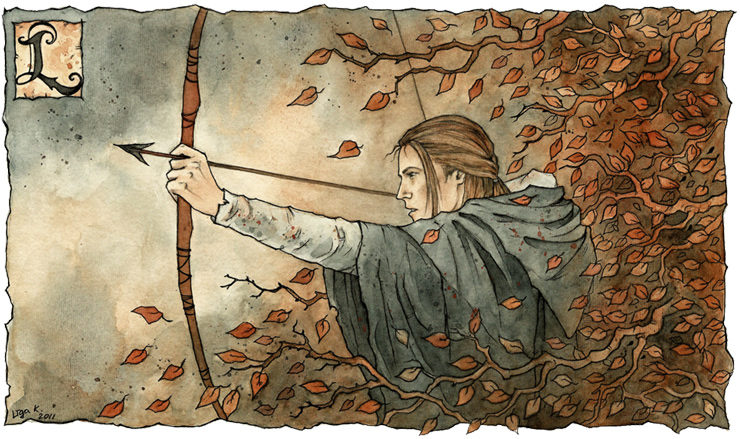
Even in strenuous situations, he isn’t as grim as most of his mortal companions. Pippin and Merry are probably the only ones more winsome than Legolas throughout the book. When the Three Hunters finally reunite with their hobbit friends after tracking them for days, only to fight in the Battle of the Hornburg, they finally discover them feasting and smoking at the gates of Ent-thrashed Isengard. Right away, Legolas is amused at Gimli’s expression of both rage and joy, and he keeps things light.
‘You speak for me, Gimli,’ laughed Legolas. ‘Though I would sooner learn how they came by the wine.’
Of course, when faced with a Balrog, he sobers up, knowing instinctively what it is, and why it’s such a threat (“of all the elf-banes the most deadly, save the One who sits in the Dark Tower”). Ultimately, Elves feel more deeply for the world they inhabit than anyone else—all the joys and relentless sorrows.
Yet Legolas is young and inexperienced, as Elves go—a millennial in a truer sense of the word—but he’s still hundreds if not thousands of years old, while elders like Galadriel have personally witnessed the greatest wonders and tragedies of the First Age long before mortal Men were even a thing, before the Sun and Moon first rose (or were even a glimmer in the eyes of the Valar). Moreover, she left the place of her birth and her parents more than seven thousand years before we even meet her in The Lord of the Rings. She’s long since lost her four big brothers, each slain battling the forces of the original Dark Lord, Morgoth. Yet Galadriel would still remember looking upon the Trees of Valinor, and seeing the legendary Silmarils (on both sides of the Great Sea); she also dwelt a good long while in the wondrous halls of Menegroth, “the fairest dwelling of any king that has ever been east of the sea.” And all that before coming to the Golden Wood and becoming its honorary queen.

As Galadriel says to Frodo and Sam:
The love of the Elves for their land and their works is deeper than the deeps of the Sea, and their regret is undying and cannot ever wholly be assuaged.
Note the emphasis on regret. I’ll come back to that. And of course, even that quote barely scratches the surface of the Elven condition. They’ve been around for so long, seen a shit-ton of good and bad, and even perpetrated much of it—especially the Noldor (like Galadriel), that branch of Elves who were exiled from Valinor. Most of those who weren’t slain during the First Age sailed across the Sea to Valinor. So by this moment in history we’re left with a handful of loiterers like Gildor, Glorfindel, and the Lady of Golden Wood.
But back in the First Age, Elves were in the spotlight, conducting the drama within and without the Undying Lands, erecting vast kingdoms, and leading the charge against Morgoth in Middle-earth.
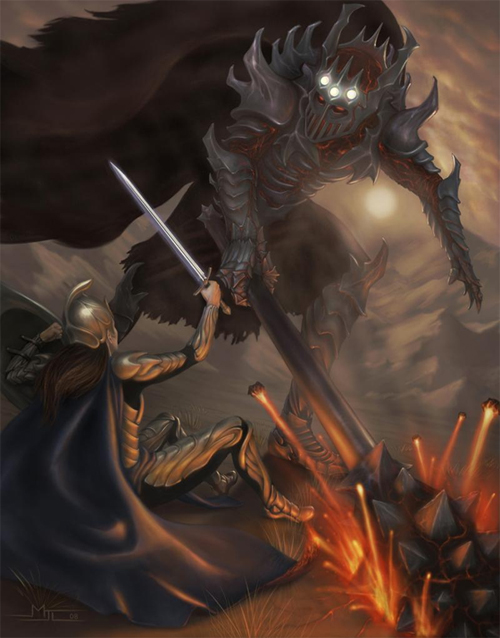
In the Second Age, they waged war on and off with Sauron until finally, at its end, Gil-galad, the last High King of the Noldor, and his armies teamed up with the remnant Númenóreans to bring the second Dark Lord down. And it worked, too, despite all Sauron’s jewelry-based shenanigans. The Last Alliance of Men and Elves totally owned his Dark ass, even when he possessed that trusty Ruling Ring.
Yet Isildur’s keeping of that pesky bauble, along with the war itself, the general decline of the nobility of Men (one might even add the rise of anti-intellectualism among Men), and the strategic game of chess that Sauron played from the shadows in the Third Age all pushed the Elves into seclusion and estrangement, so that by the time of the War of the Ring, they’re mostly just loremasters and advice-givers. And as we know, Legolas is the only Elf who sets out on that road trip to Mordor. So that makes him, among Elves, one of the most active participants in the whole affair. Every other Elf generally stays put during this time, helping our heroes as they pass through their Elven refuges and/or fighting defensively against Sauron’s invading armies. Both Lothlórien and the Woodland Realm are assaulted by armies of Orcs.
So I think, after all they’ve been through, we should allow the Elves some tra-la-la-lally nonsense. If it is even nonsense. As The Hobbit’s narrator says:
Even decent enough dwarves like Thorin and his friends think them foolish (which is a very foolish thing to think)
Interestingly, the word “immortal” comes up only a few times in The Lord of the Rings. Three times in song (in Aragorn’s tale of Beren and Lúthien, she is described as Immortal maiden elven-wise) and then only in Appendix A wherein we’re told that the long-lived-but-still-mortal Númenóreans jealously sought the “immortality within the life of the world that was the fate of the Eldar.” But even right there, Tolkien’s version of immortality is defined: within the life of the world.

Now let’s take a deeper dive. To understand the nature of all sentient peoples of Middle-earth, I think it’s helpful to put a few facts on the table—events in the mythic past as established by The Silmarillion. Arda, the world, was first shaped in a vision by the Music of the Ainur, those powerful begins who are “the offspring of Ilúvatar’s thought.” After it was made but not quite refined, Arda was “marred” by Melkor, the Ainu who would later be called Morgoth. Eru Ilúvatar himself is the singular ruler of all existence, and Men and Elves are called the Children of Ilúvatar, for he alone created and awoke them within the world.
Here we must turn to Morgoth’s Ring, volume ten of the 13-volume History of Middle-earth series, a book that’s jam-packed with valuable insight into the legendarium—though most of them were written during Tolkien’s retirement after his fame, when he continued to shape his secondary world. Anyway, within this particular volume, there is a wonderful section that sounds like it ought to be dull but totally isn’t: “Laws and Customs among the Eldar,” a subchapter which does a lot to flesh out Elf culture and the nature of their bodies and spirits. Christopher Tolkien explains that there were two nearly identical texts on the subject that his father wrote, and he parses out the differences where he can. It’s probably worth saying that the lore found in these HoMe books isn’t always consistent with all the lore throughout, as each section represents writings from different periods in his life (and which Tolkien changed his mind about often enough), but if you read enough of it you tend to see where he was going with things.
We’re told that every Elf and Man has a fëa, an indestructible “indwelling spirit,” which is to say, his or her soul or centermost being. And every one is also born with a hröa, a body made of the physical “flesh or substance of Arda itself,” that is meant to house the fëa for the full duration of that person’s life. Technically, Dwarves and Orcs and Hobbits all have fëar and hröar (the plural forms), too. But I’ll discuss those folks another time.
Meanwhile, here are some handy vocabulary words that’ll come up:
- Arda — The world (little “w”), which includes the earth, the seas, skies, and even the firmament around them (the planet and its immediate celestial surroundings).
- Children of Ilúvatar — Both Elves and Men. Biologically, these two races are of the same “species” and as such can “produce fertile offspring,” but obviously from that point on they’re quite different.
- Cuiviénen [KWEE-vee-EH-nehn] — A lake in Middle-earth, somewhere far in the East, upon whose shores the Elves first awoke.
- Eä — The World (big “w”), the entire universe itself, of which Arda is but a part.
- Eldar — A word generally synonymous with Elves. Technically, it doesn’t apply to those Elves way back in the beginning who opted to stay where they were and not get factored into any of its recorded history. Those are the Avari, the Unwilling, and they’re the one group of Elves excluded when Eldar are mentioned.
- fëa / fëar [FAY-ah / FAY-ahr] — The name given to the “spirits” of incarnate, sentient creatures.
- hröa / hröar [HROH-ah / HROH-ahr] — The physical bodies of the Children of Ilúvatar that are inhabited by fëar, and together they make up the living, breathing, people.
- Ilúvatar — Eru, The One, the singular god of Tolkien’s monotheistic legendarium.
- Maiar — The lower strata of spiritual beings that are the offspring of Ilúvatar’s thought. Ancient spirits of varying power, as this group of beings includes Gandalf, Balrogs, and Sauron himself.
- Morgoth — The Enemy, the original Dark Lord and fomenter of all evil. Formerly, the mightiest of the Ainur, known first as Melkor.
- Valar — The “agents and vice-gerents” of Eru, the upper echelon of spiritual beings, set above the Maiar, and established by Ilúvatar to shape and govern Arda.
Now, the nature and relationship between one creature’s fëa and its hröa is what sets it apart from another. To understand how this works for Elves, it helps to start with Men. An example: If too many Orc-arrows are shot into the body of a mortal Man—such as, say, a captain of Gondor in the woods near Amon Hen—then his fëa (spirit) will depart not only his hröa (body) but Arda itself, to go “whither the Elves know not.” Which is to say, to somewhere utterly outside “the circles of the world.” That’s the deal for Men. One body, one life, then their fëar go elsewhere. This is sometimes called the Gift of Men, a separate topic for another article.
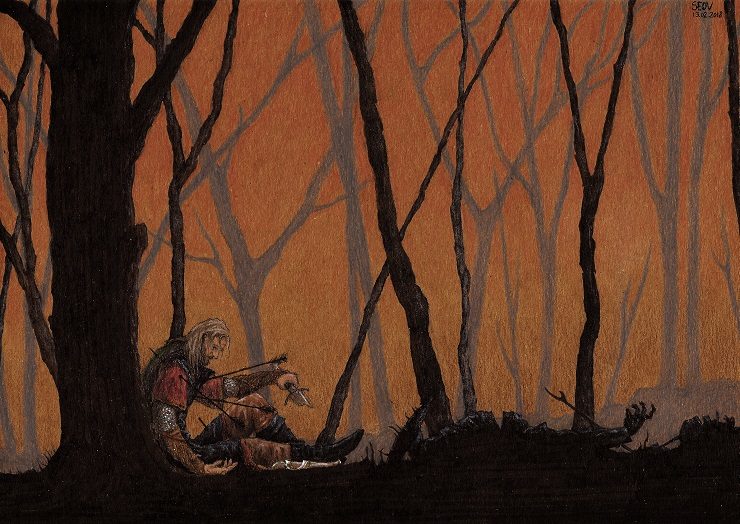
But Elves are immortal, though that doesn’t mean that they can’t be offed. Rather, they can appear to die (and in The Silmarillion a heck of a lot of them do), but that’s not so much dying as getting unhoused. Evicted. An Elf’s hröa, his body, can be so banged up or even “utterly destroyed” that “it becomes painful for the fëa to dwell in it,” and if the body is so irreparably damaged then, quite simply, “the fëa departs from it.”
So while sometimes the narrative text might say an Elf is killed, they’re not really dead. They’re just…mostly dead? By design, the fëa and hröa are counterparts; they’re meant to stick it out together for the duration of Arda. So it takes a hell of a lot to kill an Elf, particularly those hardy Eldar of the First Age. But all varieties of Elf heal fast, they can’t get sick, and they can withstand great periods of physical pain. They’re also unafraid of “the ghosts of Men.” Hence, in the Paths of the Dead, Legolas is unfazed while Gimli squirms.
In Tolkien words:
The fëar of the Elves were destined to dwell in Arda for all the life of Arda, and the death of the flesh did not abrogate that destiny. Their fëar were tenacious therefore of life ‘in the raiment of Arda’, and far excelled the spirits of Men in power over that ‘raiment’, even from the first days protecting their bodies from many ills and assaults (such as disease), and healing them swiftly of injuries, so that they recovered from wounds that would have proved fatal to Men.
Right away, this makes me think of Maedhros, a Silmarillion Elf who Morgoth captured and tacked up on the mountain wall above his lair, who was just left to hang in torment and thirst for a long, long time (months to years, it’s unclear). It strikes me that no Man’s spirit would have been able to cling to and support his body so well.
Ironically, though it might be harder to destroy an Elf’s hröa, his or her body could still perish by will alone “because of great grief or bereavement.” So stress itself—okay, serious levels of stress, probably beyond a mortal’s understanding—could do the trick. This sort of thing happened rarely, but it could and did occur. In The Silmarillion, Míriel, the mother of Arda’s most infamous Elf (Fëanor), chooses to die rather than live on, for she is utterly spent and spiritually stricken by the birth of her son. Even the heroine Lúthien dies from grief when her mortal husband, Beren, is himself slain by the werewolf Carcaroth. That opportunity, in turn, allowed Lúthien to plead their tragic case to the powers that be over in Aman, where fëar are summoned once they’re loosed.
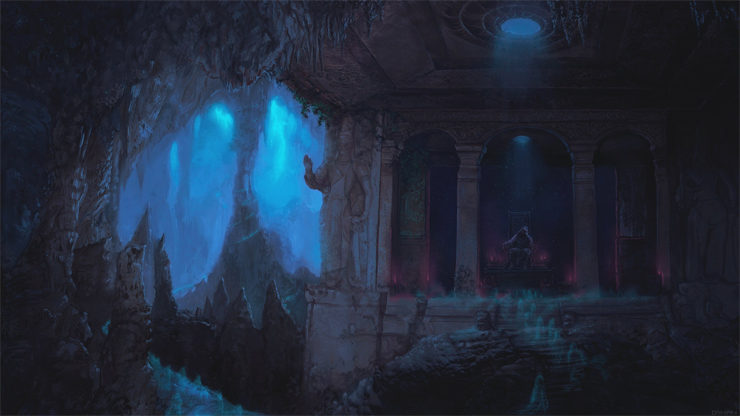
Not just Aman, but the Halls of Mandos at the far western edge of Valinor. The Halls are governed by, well…Mandos. It’s got his name. Well, his birth certificate lists him as Námo, but no one really calls him that (understandably). They call him by his real estate instead. He is also known as the Doomsman of the Valar, “the keeper of the Houses of the Dead, and the summoner of the spirits of the slain.” So while not necessarily all bodiless Elven fëar answer the summons, all are “summoned to leave the places of their life and death and go to the ‘Halls of Waiting.’ Aka the Halls of the Dead, the Halls of Mandos. Which, frankly, sounds like the coolest and creepiest place on earth, since Mandos’s wife is Vairë the Weaver…
who weaves all things that have ever been in Time into her stories webs, and the halls of Mandos that ever widen as the ages pass are clothed with them.
Oh yeah. Clothed with doom-threaded tapestries, curtains, and other textiles. I so want to attend a dinner party hosted by Mandos and Vairë. I mean, the goth upholstery alone…
Well, I digress. So once slain Elves reach Mandos—and then only if they desire it—the best case scenario is that their fëar are rehoused in new hröar after a time of waiting and spiritual cleansing based on whatever “evil and grief that they had suffered.” For most Elves, that grief is simply the hardships they’ve lived through.
Ah, but for others, it’s also the evils in which they were complicit, or had perpetuated.
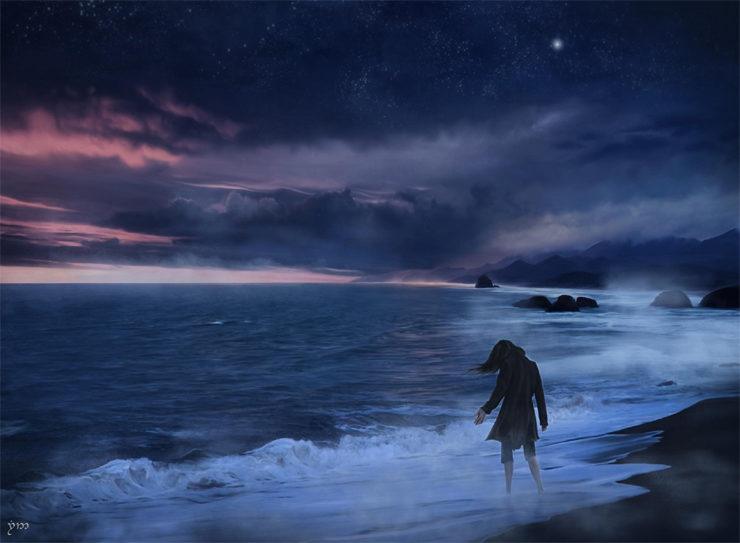
Fun fact: Elves didn’t always know how this process worked! They weren’t born knowing everything (hey, who is?). In the early days of their existence—after they awoke beneath the stars by the shores of lake Cuiviénen, most Elves assumed that, in dying, they “entered into Nothing” like everything else around them that lived (plants and animals). Other Elves actually believed that they “passed into ‘the Realm of Night’ and into the power of the ‘Lord of Night’”…yikes, whoever that was! Turns out fake news is what that was, planted by Morgoth and his spies in an effort to spook the Elves into shunning the Valar when the Valar made first contact with them.
And indeed, upon discovering the Elves living under the stars in Middle-earth, in a dark land rife with dangers (Arda Marred), the Valar met to discuss what to do about about, as we know from The Silmarillion. They decided, though not unanimously, to invite those Elves willing to come to Aman, and specifically to their realm of Valinor. Moreover, in learning of the Elves’ fear of death, Morgoth’s Ring goes a little deeper with this reasoning, adding that specifically…
it was to deliver them from this shadow upon their minds, more even than from the dangers of Arda marred, that the Valar desired to bring them to the light of Aman.
So this is a bit more insight into the Valar’s real reasoning for that famous summoning. We do come to understand, in dribs and drabs, that the summoning of the Elves to Valinor might have been something of a mistake, or at least an overreach on the part of the well-meaning Valar. It had consequences, not least of which were many schisms among Elves in simply making the great journey from Middle-earth to Aman. Sure, it was a win-win for a good long time, and those Elves who did reach Valinor become mighty indeed—all the better to challenge Morgoth later—but many sorrows came of it in the meantime.
Anyway, Tolkien wrote a lot about the fëar and hröar of things, wanting to make his mythology as internally consistent as he could. But being a quintessential nerd, he got lost in the minutia and never really got around to giving us specific examples of this process of rehousing Elven spirits. In The Silmarillion, the references are brief, or just hinted at. Like when Finrod, brother of Galadriel and the most neighborly of all Elves, is slain by a werewolf, we’re told that his friends bury him on a hill-top. And then the narrator just casually says like it’s no big deal:
But Finrod walks with Finarfin his father beneath the trees in Eldamar.
Walks with, present tense. This sentence is Tolkien-shorthand for: But Finrod totally had his fëa rinsed off in the Halls of Mandos (probably fast-tracked because he’s Finrod and he’s awesome), was re-embodied in a fully restored, golden-haired hröa (that looks just like his original one), and now in the present day he still goes on strolls with his dad… and surely he also goes on innumerable dates with Amarië, his girlfriend, and is looking to settle down with her soon.
The implication is that Finrod was reborn and now dwells in bliss in Aman, and he’ll be there until Arda itself is finished.
For a clearer example of the process, we can at least look to Glorfindel, chief of the House of the Golden Flower. He’s certainly the most famous poster boy for this death-and-rebirth process. He was a valiant captain among the Noldor in the First Age whose sacrifice during the sacking of Gondolin allowed many refugees—including some very important ones like Elrond’s dad!—to escape. Like a boss, Glorfindel fell from a high pinnacle of rock with the Balrog that he’d challenged, Gandalf-style.
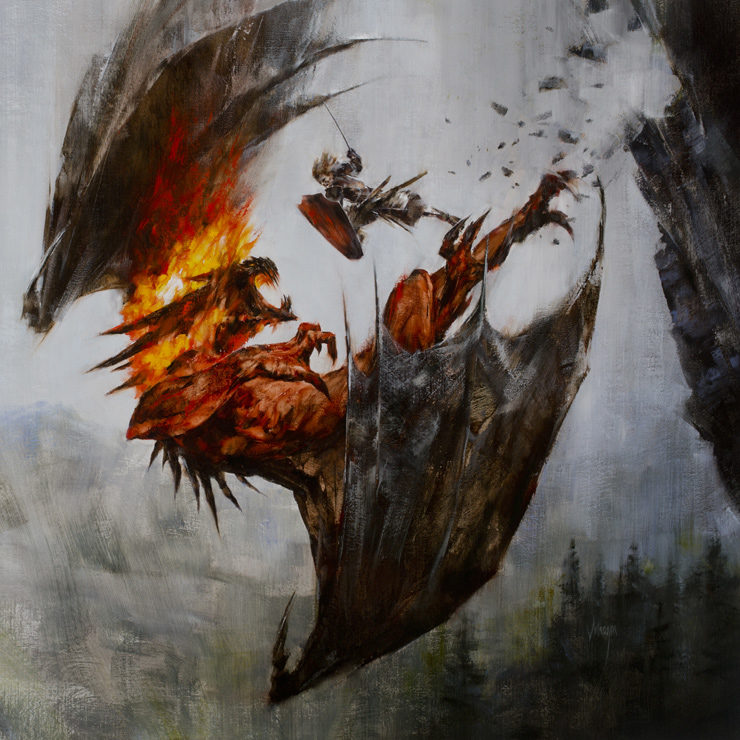
But unlike Gandalf (a Maiar spirit merely given the “raiment” of flesh), this valiant Elf had a proper hröa, and it was damaged enough—by Balrog fire, weapons, and a significant fall—that his fëa was cut loose and summoned to the Halls of Mandos. In due time, as Tolkien propounds in The Peoples of Middle-earth, Glorfindel’s fëa was rehoused, dwelt for a long time in Aman with old friends and family (but also Maiar like Gandalf!), and was then finally sent back to Middle-earth. Where he would go on, among other things, to…
- Fight the good fight against the new Dark Lord, Sauron the Terrible.
- Spout the famous prophecy that would later trip up the Witch-king.
- Help a Ringbearing and wounded halfling hitch a ride to Rivendell.
A fair question would be: the body that Glorfindel’s fëa was rehoused in—was that his original hröa just somehow patched up? And while that is possible if an Elf’s body is still in good enough shape, that wasn’t the case for our captain of Gondolin. Glorfindel’s original remains were buried in a cairn of stones in Beleriand, which eventually sank into the Great Sea at the end of the First Age. So his fëa was placed in a clone of sorts… one constructed from his own memories. See, a footnote in Morgoth’s Ring (because that’s how some of Tolkien’s most interesting writings are found) shares a snippet of conversation between Manwë (the King of the Valar) and the big boss himself (Eru Ilúvatar). The boss tells him:
Look and ye will find that each spirit of My Children retaineth in itself the full imprint and memory of its former house; and in its nakedness it is open to you, so that ye may clearly perceive all that is in it. After this imprint ye may make for it again such a house in all particulars as it had ere evil befell it. Thus ye may send it back to the lands of the Living.
All right, so we’ve established that Elves stick around, whether in their original bodies or in Valar-made duplicates. Life should be perfect for them, surely? I mean, straight out of The Silmarillion we know that Ilúvatar declared that the Elves, his Firstborn, would be “the fairest of all earthly creatures” and that they “have and shall conceive and bring forth more beauty” than any other race. Then on top of that, Ilúvatar also said that “they shall have the greater bliss in this world.”
Which is great, but the world itself is imperfect. This is Arda Marred, remember, and there is plenty of sorrow to be found, and the Elves are going to be there for it. For all of it. And, as is also said in a footnote in Morgoth’s Ring:
The Elves had (as they said themselves) a ‘great talent’ for memory, but this tended to regret rather than to joy.
This doesn’t make Elves a bunch of Debbie Downers—far from it—but it does show why they sometimes might carry the weight of the world on their shoulders. And this brings me back to the talk of “fading.” Right from the moment of their awakening, Elves were destined to tend to and delight in the natural world. They grow strong indeed and for untold thousands of starlit years, before the Moon or Sun even show up, they’re on top. But when Men awoke at the first dawn, so began the Elves’ very, very gradual decline in overarching power and influence. The ages of the stars had ended. Even Mandos called it way, way before, declaring that “Great light shall be for their waning.”
It’s a slow fade, to be sure, but by the time The Lord of the Rings rolls around, the Elves are well into their golden years as a race.
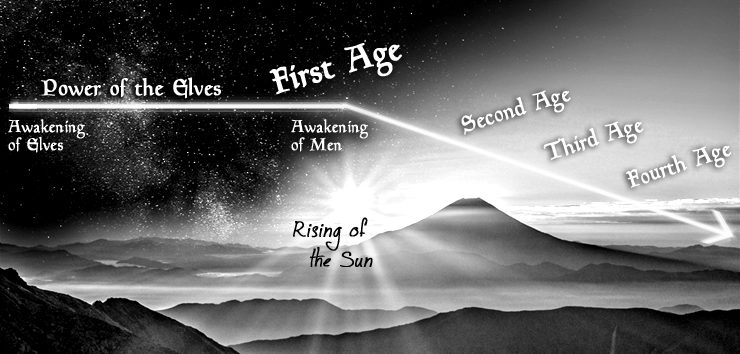
The Silmarillion itself also summarizes the Elven condition:
For the Elves die not till the world dies, unless they are slain or waste in grief (and to both these seeming deaths they are subject); neither does age subdue their strength, unless one grow weary of ten thousand centuries; and dying they are gathered to the halls of Mandos in Valinor, whence they may in time return.
That phrase, “seeming deaths,” is ultimately the key, I think. Because they’re not dying in the way mortals die, though it looks much the same. And being slain does still separate them from those they love, quite possibly for Eru knows how long. Ages. Look how long Galadriel lives on while her siblings have long since gone back to be rehoused in Valinor. It is probably with both joy and sadness that she says she will “diminish, and go into the West.”
So Elves decline, by design, and yet their spirits become more dominant. Wait, what? So part of them is decreasing and part is increasing? Yeah, basically! As the ages roll on, the individual fëar of Elves actually increase in strength, but their hröar do not. As Morgoth’s Ring explains,
after the vitality of the hröa was expended in achieving full growth, it began to weaken or grow weary. Very slowly indeed, but to all the Quendi perceptibly. For a while it would be fortified and maintained by its indwelling fëa, and then its vitality would begin to ebb, and its desire for physical life and joy in it would pass ever more swiftly away. Then an Elf would begin (as they say now, for these things did not fully appear in the Elder Days) to ‘fade’, until the fëa as it were consumed the hröa until it remained only in the love and memory of the spirit that had inhabited it.
Thus in time, an Elf’s body will become “a mere memory held by the fëa.” Like an afterimage, a vision. In due time, all the Elves in Middle-earth “will have become as spirits invisible to mortal eyes, unless they will to be seen by some among Men into whose minds they may enter directly.” Essentially, they become like the elusive faeries of modern folklore.
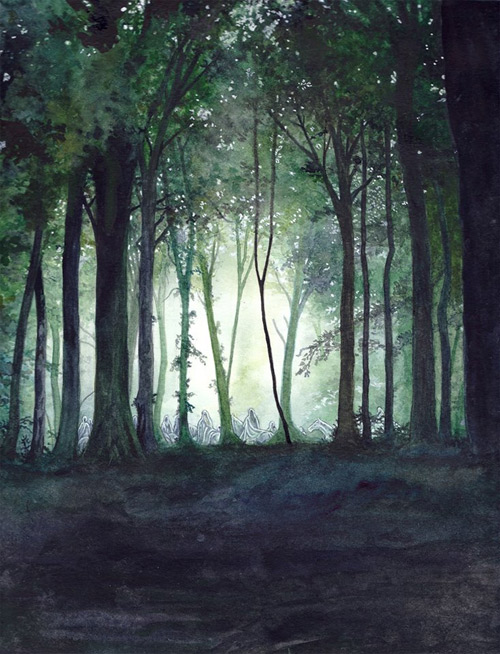
Next time, in part two of this essay, we’ll get to Elf-kids, the whereabouts of female Elf-warriors, and what constitutes a scandal among the Eldar!
Top image from “Regret beside the Waves” by Rina.
*Oh, regarding Elven ears, the evidence is relatively inconclusive whether they’re supposed to be pointed, but in a letter to the Houghton Mifflin Company, while describing hobbits, Tolkien wrote that they are “fattish in the stomach, shortish in the leg. A round, jovial face; ears only slightly pointed and ‘elvish’; hair short and curling (brown)” Elsewhere, and in etymological notes, he wrote that Elvish ears, or “Quendian ears were more pointed and leaf-shaped than [human],” so there you have it! Elves most definitely have pointy ears!
Jeff LaSala, can’t leave Middle-earth well enough alone. Aside from the The Silmarillion Primer and various other Tolkien outlets, he wrote a Scribe Award–nominated D&D novel, produced some cyberpunk stories, and now works for Tor Books. He sometimes sputters about on Twitter.










